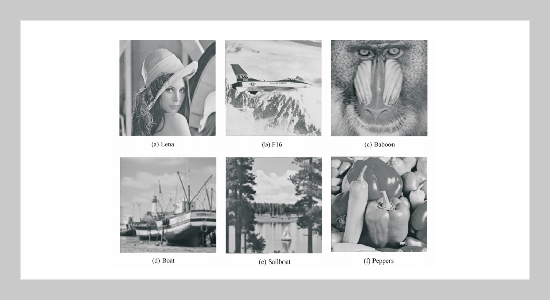REFERENCES
- [1] Bender, W., Gruhl, D., Morimoto, N. and Lu, A., “Techniques for Data Hiding,” IBM System Journal, Vol. 35(3&4), pp. 313�336 (1996).
- [2] Pfitzmann, B., “Information Hiding Terminology,” Proc. of First Internet Workshop on Information Hiding, Cambridge, UK, pp. 347�350 (1996).
- [3] Manicca, S. S. and Bourbakis N., “Lossless Compression and Information Hiding in Images,” Pattern Recognition, Vol. 37, pp. 475�486 (2004).
- [4] Pennebaker, W. B. and Mitchell, J. L., “JPEG: Still Image Data Compression Standard,” New York: Van Nostrand Reinhold, (1993).
- [5] Lee, Y. K. and Chen, L. H., “An Adaptive Image Steganographic Model Based on Minimum-Error Replacement,” Proc. of the Ninth National Conference on Information Security, Taichung, Taiwan, pp. 8�15 (1999).
- [6] Liu, J. C. and Chen, S. Y., “Fast two-layer Image Watermarking Without Resorting to Original Image and Watermark,” Proc. of Joint Conference of International Computer Symposium, Taiwan, R.O.C, pp. 231� 238 (2000).
- [7] Yu, P. T., Tsai, H. H. and Kin, J. S. “Digital Watermarking Based on Neural Networks for Color Images,” Signal Processing, Vol. 81, pp. 663�671 (2001).
- [8] Moulin, P. and Mihcak, M. K., “A Framework for Evaluating the Data-Hiding Capacity of Image Sources,” IEEE Trans. on Image Processing, Vol. 11(9), pp. 1029� 1042 (2002).
- [9] Thien, C. C. and Lin, J. C., “A Simple and High-hiding Capacity Method for Hiding Digit-by-digit Data in Images Based on Modulus Function,” Pattern Recognition, Vol. 36, pp. 2875�2881 (2003).
- [10] Noda, H., Spaulding J., Shirazi, M. N. and Kawaguchi, E., “Application of Bit-Plane Decomposition Steganography to JPEG2000 Encoded Images,” IEEE Signal Processing Letters, Vol. 9(12), pp. 410�413 (2002).
- [11] Wu, D. C. and Tai, W. S., “A Steganographic Method for Images by Pixel-Value Differencing,” Pattern Recognition Letters, Vol. 24, pp. 1613�1626 (2003).
- [12] Chang, C. C. and Tseng, H. W., “A Steganographic Method for Digital Images using Side Match,” Pattern Recognition, Vol. 25, pp. 1431�1437 (2004).
- [13] Kutter, M., Jordan, F. and Bossen, F., “Digital Signature of Color Image using Amplitude Modulation,” J. Electron. Imaging, Vol. 7(2), pp. 326�332 (1998).
- [14] Chang, C. K. and Cheng, L. M., “Hiding Data in Images by Simple LSB Substitution,” Pattern Recognition, Vol. 37, pp. 469�474 (2004).
- [15] Chen, T. S., Chang, C. C. and Hwang, M. S., “A Virtual Image Cryptosystem Based upon Vector Quantization,” IEEE Transactions on Image Processing, Vol. 7(10), pp. 1485�1488 (1998).
- [16] Gray, R. M. and Neuhoff, D. L., “Quantization,” IEEE Trans. Information Theory, Vol. 44(6), pp. 2325�2383 (1998).
- [17] Hsu, C. T. and Wu, J. L., “Hidden Digital Watermarks in images,” IEEE Transactions on Image Processing, Vol. 8(1), pp. 58�68 (1999).
- [18] Chen, L. H. and Chang, H. M., “Two New Methods for Visible Digital Watermarking,” Proc. of the Ninth National Conference of Information Security, Taichung, Taiwan, R.O.C., pp. 23�26 (1999).
- [19] Cox, I. J., Kilian J., Leighton T. and Shamoon T., “Secure Spread Spectrum Watermarking for Multimedia,” IEEE Transactions on Image Processing, Vol. 6(12), pp. 1673�1687 (1997).
- [20] Langelaar, G. C., Lagendijk, R. L. and Biemond J., “Removing Spatial Spread Spectrum Watermarks by Non-linear Filtering,” In 9th European Signal Processing Conference (EUSIPCO’98), Island of Rhodes, Greece, pp. 2281�2284 (1998).
- [21] Wang, Y. and Pearmain A., “Blind Image Data Hiding Based on Self Reference,” Pattern Recognition, Vol. 25, pp. 1681�1689 (2004).
- [22] Chung, K. L., Shen, C. H. and Chang, L. C., “A Novel SVD- and VQ-based Image Hiding Scheme,” Pattern Recognition Letters, Vol. 22, pp. 1051�1058 (2001).
- [23] Swanson, M. D., Xu B. and Tewfik, A. H., “Robust Data Hiding for Images,” In 7th Digital Signal Processing Workshop (DSP96), Loen, Norway, pp. 37�40 (1996).
- [24] Hsu, C. T. and Wu, J. L., “DCT-Based Watermarking for Video,” IEEE Transactions on Consumer Electronics, Vol. 44(1), pp. 206�215 (1998).
- [25] Langelaar, G. C. and Lagendijk, R. L., “Optimal Differential Energy Watermarking of DCT Encoded Images and Video,” IEEE Transactions on Image Processing, Vol. 10(1), pp. 148�158 (2001).
- [26] Di, Y., Liu, H., Ramineni, A. and Sen, A., “Detecting Hidden Information in Images: A Comparative Study,” Proc. of the 2nd Workshop on Privacy Preserving Data Mining (PPDM), Florida, U.S.A., pp. 24�30 (2003).
- [27] Westfeld, A, “F5-A Steganographic Algorithm High Capacity Despite Better Steganalysis,” Lecture Notes in Computer Science, Vol. 2137, pp. 289�302 (2001).
- [28] Westfeld, A. and Pfitzmann A., “Attacks on Steganographic Systems Breaking the Steganographic Utilities EzStego, Jsteg, Steganos, and S-Tools - and Some Lessons Learned,” Lecture Notes in Computer Science, Vol. 1798, pp. 61�75 (2000).
















